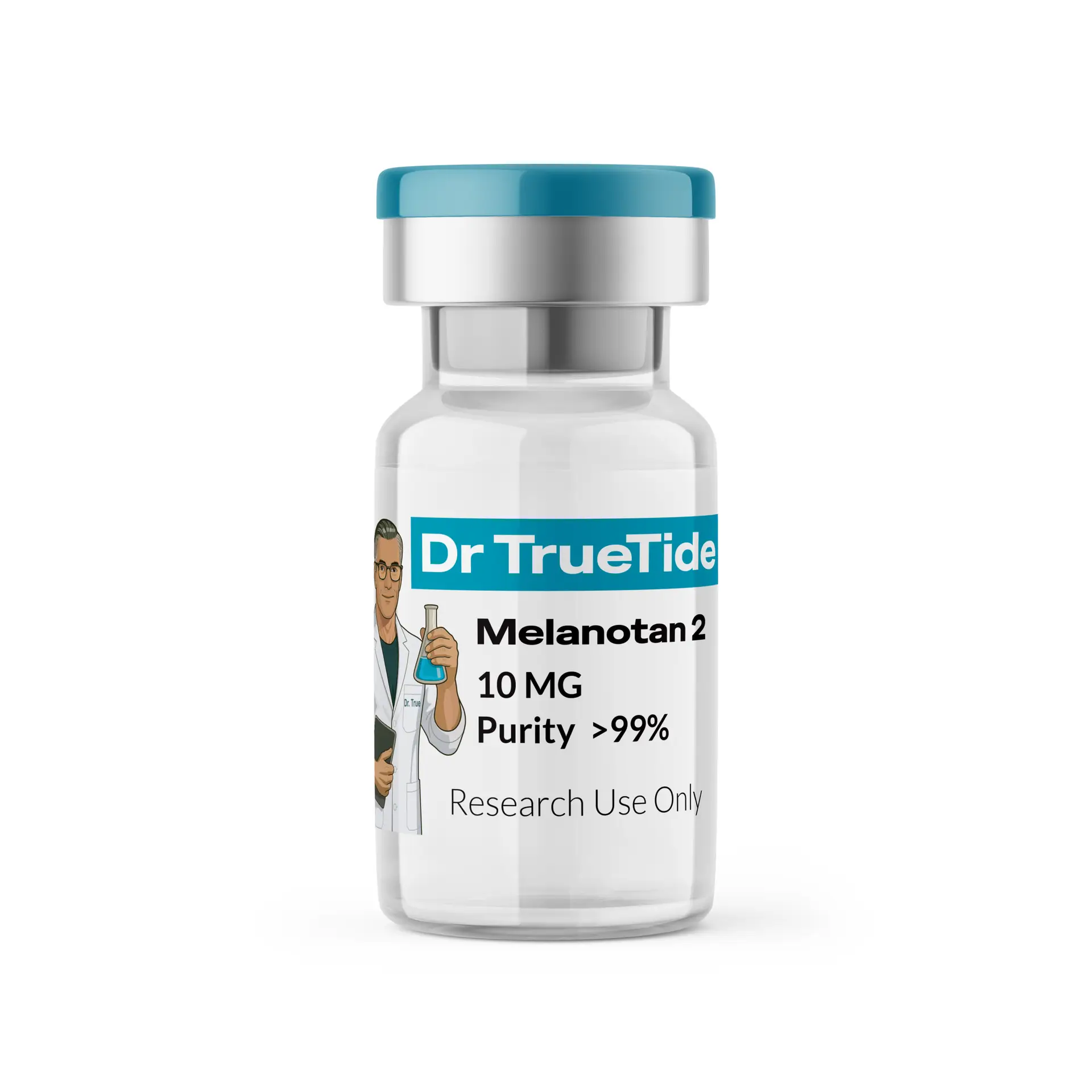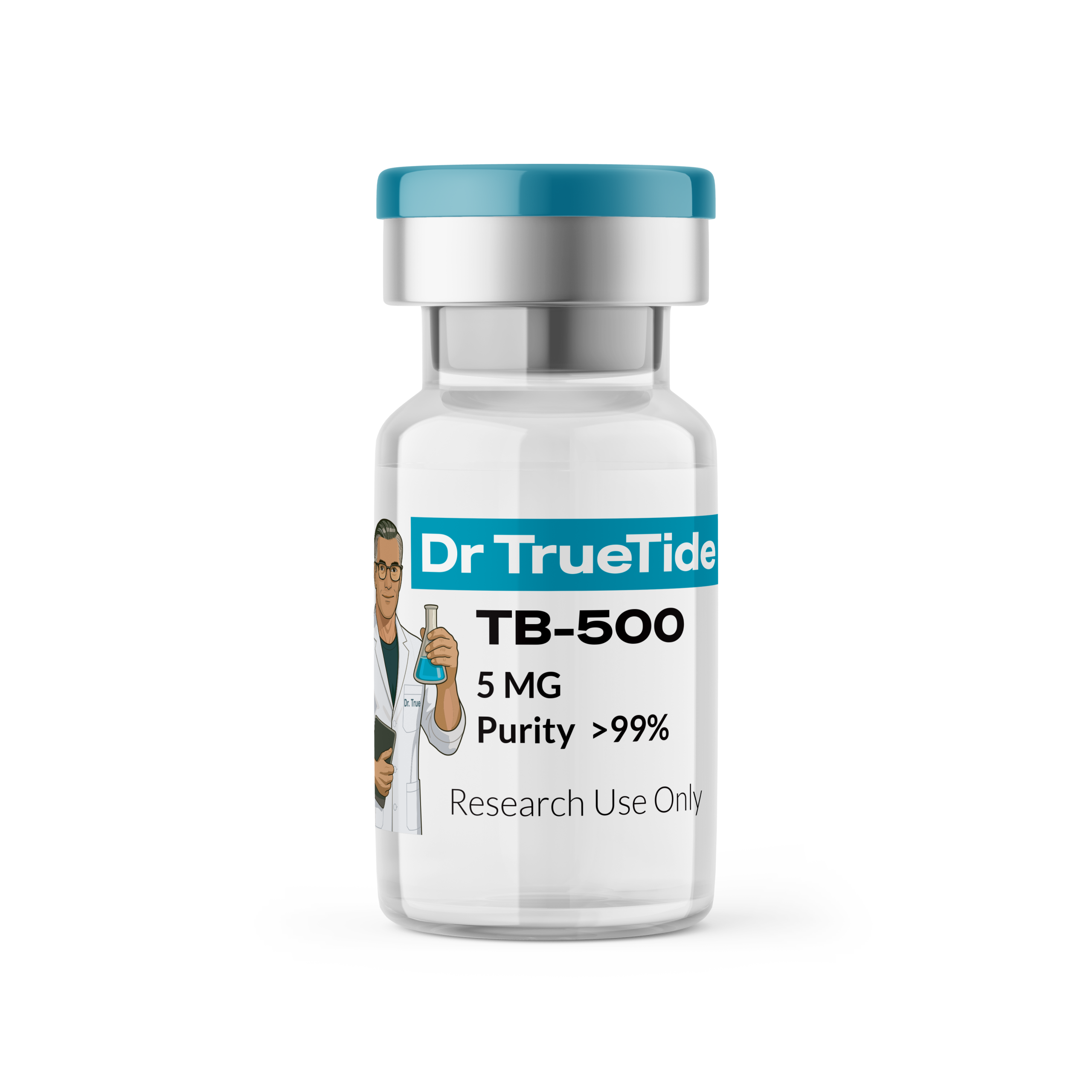

Retatrutide
$190.00 Original price was: $190.00.$160.00Current price is: $160.00.
Note: Peptides will arrive in a lyophilized (powder) form for maximum stability.
Retatrutide is a next-generation peptide designed to target three key hormone receptors in the body—GLP-1, GIP, and glucagon receptors—simultaneously. By combining the benefits of appetite suppression, increased calorie burning, and enhanced insulin sensitivity, Retatrutide has demonstrated exceptional potential in research focused on obesity, type 2 diabetes, and metabolic liver conditions. In clinical studies, participants experienced profound weight loss and improved metabolic health, making it one of the most promising research compounds under investigation for full-spectrum metabolic support¹²³.
Need Help? Chat with an Expert
Money Back Guarantee
Free Shipping & Returns
Online Support 24/7
Secure Payment
Product Details
- Chemical Identity and Properties
- Primary Uses and Effects
- Notable Scientific Studies
- Emerging and Future Research Directions
- Sources
- Disclaimer
1. Chemical Identity and Properties
- CAS Number: 2381089-83-2
- Molecular Formula: C₂₂₁H₃₄₂N₄₆O₆₈
- Molar Mass: ~4731.3 g/mol
- Synonyms: LY3437943 (research name)
- Sequence: 39-amino acid sequence with modified residues and a C20 fatty diacid conjugation for extended half-life
- PubChem SID: 574324432
2. Primary Uses and Effects
Retatrutide is a peptide designed to mimic and amplify the effects of three naturally occurring hormones that help regulate metabolism: GLP-1 (glucagon-like peptide-1), GIP (glucose-dependent insulinotropic polypeptide), and glucagon. By targeting all three receptors at once, it helps the body address multiple challenges associated with obesity, insulin resistance, and metabolic dysfunction.
GLP-1 Receptor Activation
Helps reduce appetite, slow down digestion, and improve insulin release after meals. These effects lead to better blood sugar control and lower calorie intake¹.
GIP Receptor Activation
Works in synergy with GLP-1 to further enhance insulin secretion. Emerging data also suggest it may directly support fat metabolism and promote weight loss².
Glucagon Receptor Activation
Raises energy expenditure by encouraging the body to burn more fat and calories. Although glucagon can increase blood sugar, the combination with GLP-1 and GIP balances this effect, maintaining healthy glucose levels³.
The result is a multi-pronged approach to metabolic health: users in clinical studies experienced reduced hunger, increased fat burning, improved insulin sensitivity, and major reductions in body weight and liver fat⁴⁵. These characteristics make Retatrutide a promising research candidate for obesity, type 2 diabetes, and non-alcoholic fatty liver disease (NAFLD).
3. Notable Scientific Studies
Phase 2 Obesity Study (NEJM, 2023)
In a 48-week clinical trial involving 338 adults with obesity (no diabetes), participants receiving Retatrutide at the highest dose experienced average body weight reductions of over 24%, compared to just 2% in the placebo group. Nearly 9 out of 10 participants lost at least 10% of their body weight, a milestone rarely seen outside of bariatric surgery. Improvements in waist circumference, blood pressure, and cholesterol were also observed. Reported side effects were mostly mild to moderate gastrointestinal discomfort during dose increases.
Metabolic Liver Disease Substudy (Nature Medicine, 2024)
In a subgroup of trial participants with fatty liver disease (MASLD), liver fat content was reduced by over 80% within 24 weeks at the 8 mg and 12 mg doses. By the end of the study, most patients had normalized liver fat levels, alongside improvements in liver enzymes and metabolic markers. This positions Retatrutide as a potential breakthrough for treating non-alcoholic steatohepatitis (NASH) and related liver conditions.
Type 2 Diabetes Trial (The Lancet, 2023)
In another Phase 2 trial with 281 adults with type 2 diabetes, Retatrutide led to HbA1c reductions as low as 5.7%—the threshold for normal blood sugar. Over 80% of participants reached non-diabetic glucose levels, and many lost 15–17% of their body weight over 36 weeks. This dual benefit on weight and glycemic control was unmatched by other medications in the study.
Preclinical Study in Obese Mice (Cell Metabolism, 2022)
In rodent models, Retatrutide outperformed dual agonists by promoting significantly greater fat loss. These effects were attributed to the addition of glucagon receptor activation, which increased energy expenditure. The study confirmed that combining three hormone pathways could unlock synergistic effects not seen with single or dual agonist peptides.
4. Emerging and Future Research Directions
Obesity and Weight Loss
Large-scale Phase 3 trials are currently underway to confirm Retatrutide’s efficacy in a broader population, including people with cardiovascular risk factors. If successful, it may become a leading treatment for clinical obesity⁵.
Type 2 Diabetes and Prediabetes
The peptide’s ability to normalize blood sugar and reduce weight positions it as a potential first-line treatment in diabetes care.
Fatty Liver Disease (NASH)
Given its exceptional performance in reducing liver fat, future studies may focus on using Retatrutide to halt or reverse liver fibrosis and inflammation in advanced liver disease.
PCOS and Hormonal Disorders
With promising effects on insulin resistance and weight loss, Retatrutide may have applications in conditions like polycystic ovary syndrome (PCOS), which often include both metabolic and hormonal dysregulation.
Cardiometabolic Protection
Researchers are exploring whether the weight loss and metabolic benefits seen with Retatrutide also reduce cardiovascular risk, with potential long-term benefits on heart health and inflammation.
Ongoing studies continue to investigate how Retatrutide could serve as a comprehensive tool in metabolic medicine, targeting the root causes of obesity and its related complications.
5. Sources
- Jastreboff AM, et al. Triple–Hormone–Receptor Agonist Retatrutide for Obesity — A Phase 2 Trial. New Engl J Med. 2023;389(6):514-526.
- Sanyal AJ, et al. Triple hormone receptor agonist retatrutide for MASLD (NAFLD): a randomized phase 2a trial. Nature Medicine. 2024;30(7):2037-2048.
- Rosenstock J, et al. Retatrutide, a GIP, GLP-1 and glucagon receptor agonist, for people with type 2 diabetes. The Lancet. 2023;402(10349):1498-1511.
- Coskun T, et al. LY3437943, a novel triple GIP, GLP-1, and glucagon receptor agonist: from discovery to clinical proof of concept. Cell Metabolism. 2022;34(9):1234-1247.e9.
- Pharmaceutical Technology. Retatrutide sets new record for weight loss in obesity – Phase II results and Phase III plans. GlobalData, 2023.
6. Disclaimer
Retatrutide is for research use only. It is not approved by the FDA or any regulatory agency for human or veterinary use, consumption, or therapeutic applications of any kind. By purchasing this product, you agree to our Terms and Conditions.
Only logged in customers who have purchased this product may leave a review.
No Minimum Purchase - Free Shipping On All Orders -

Retatrutide
$190.00 Original price was: $190.00.$160.00Current price is: $160.00.








Reviews
There are no reviews yet.